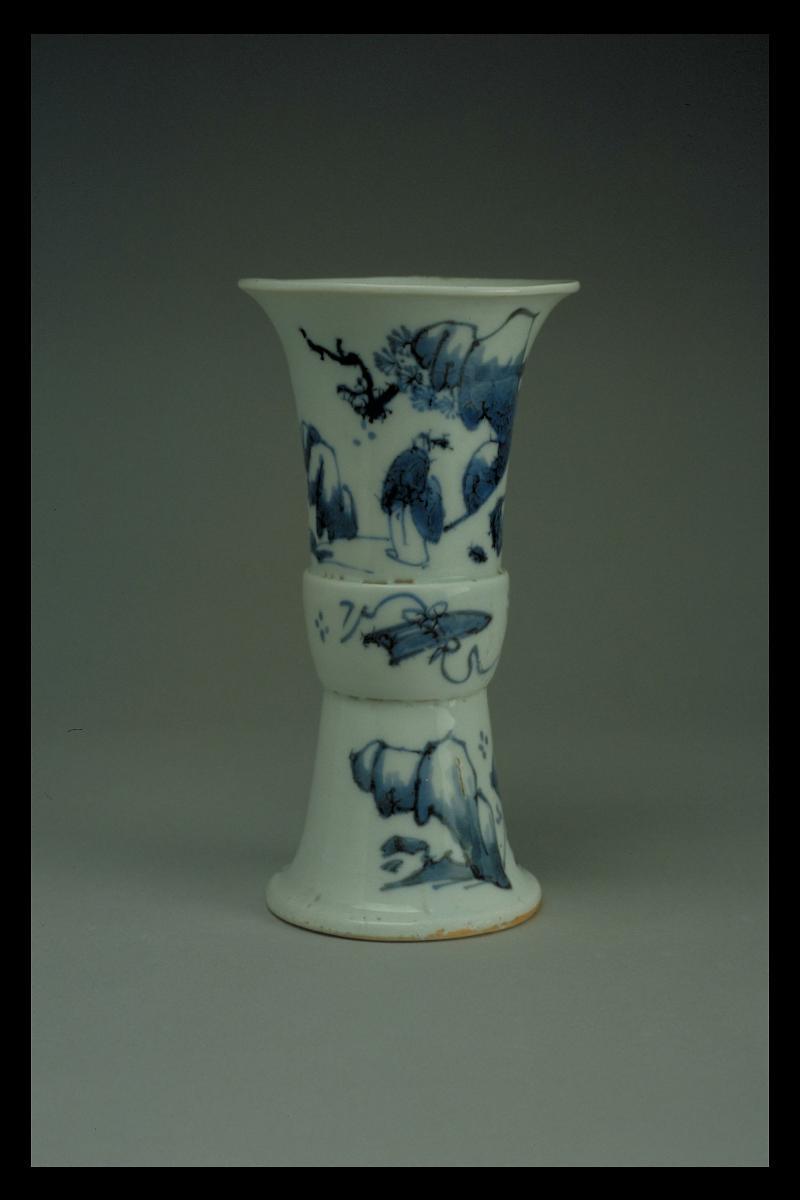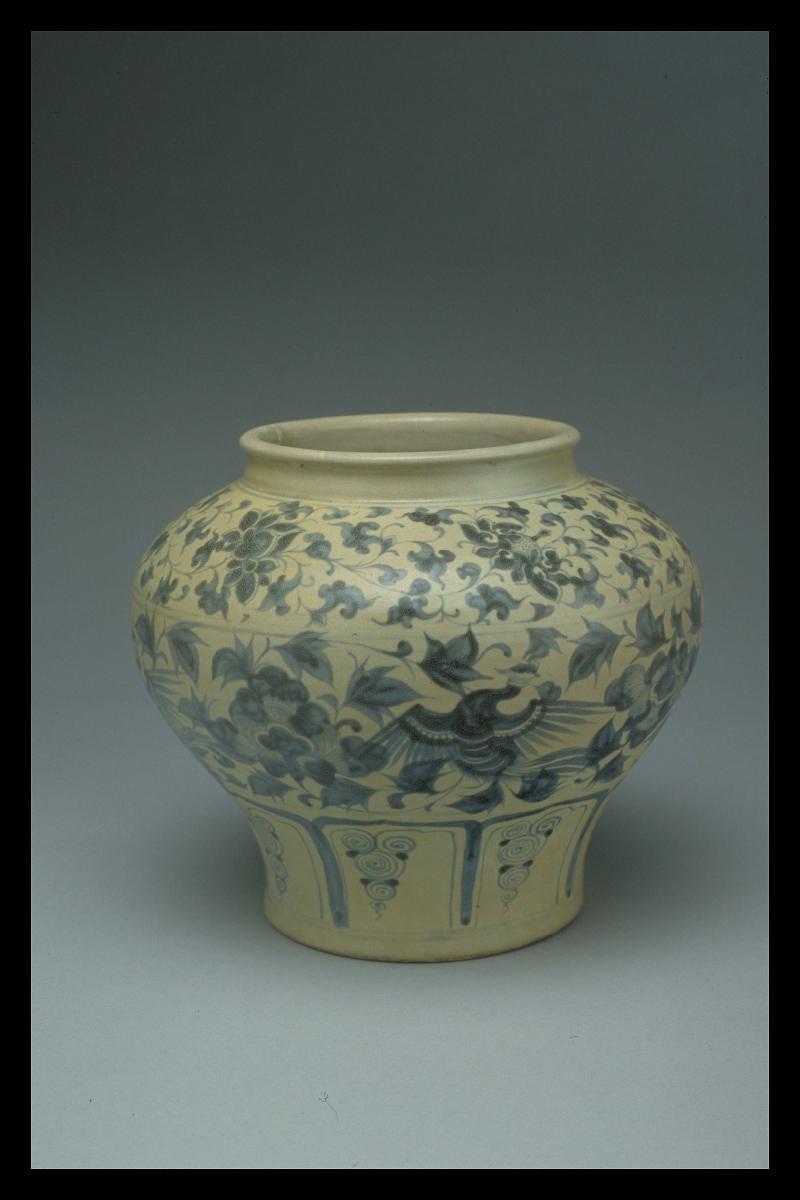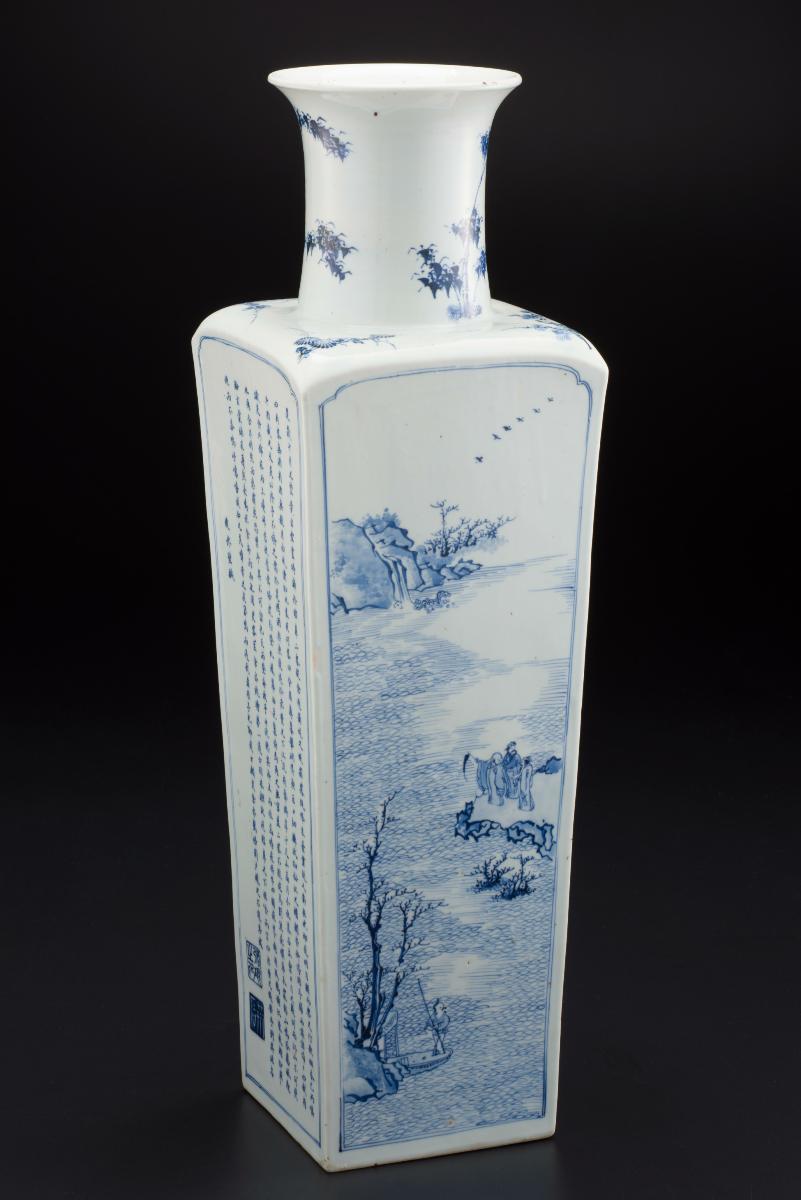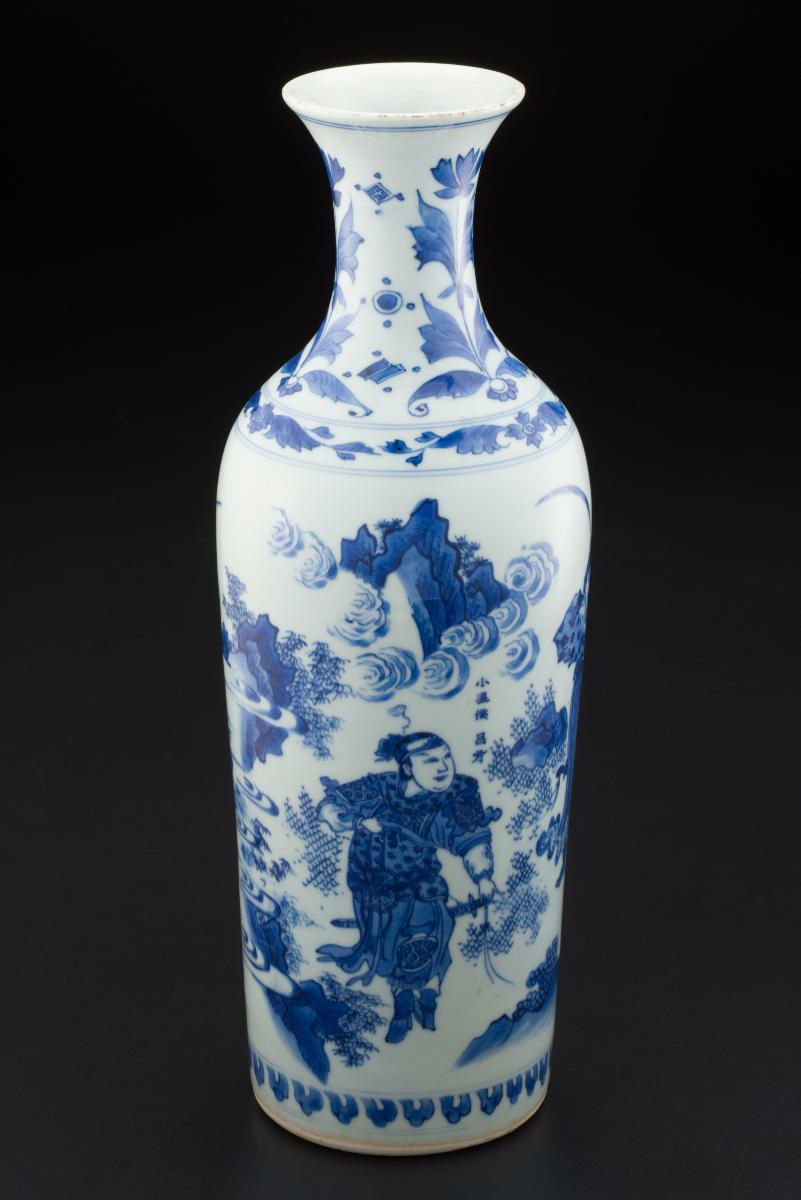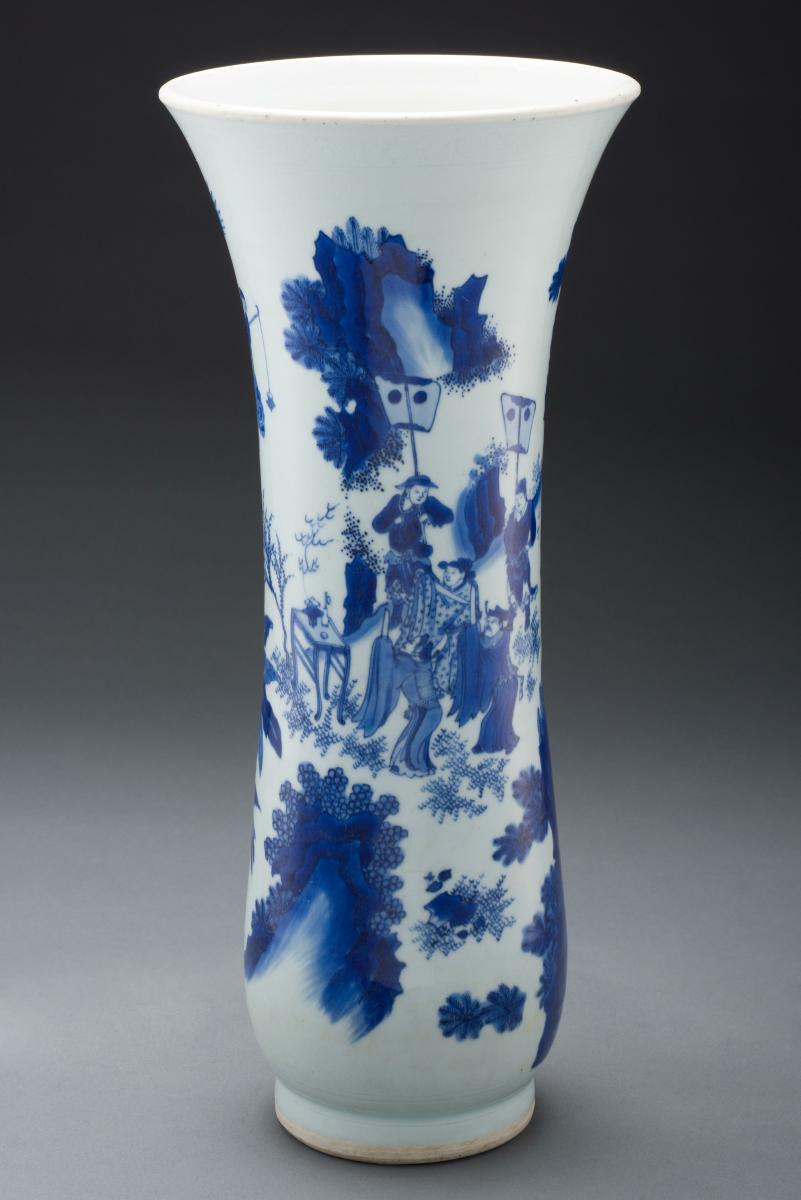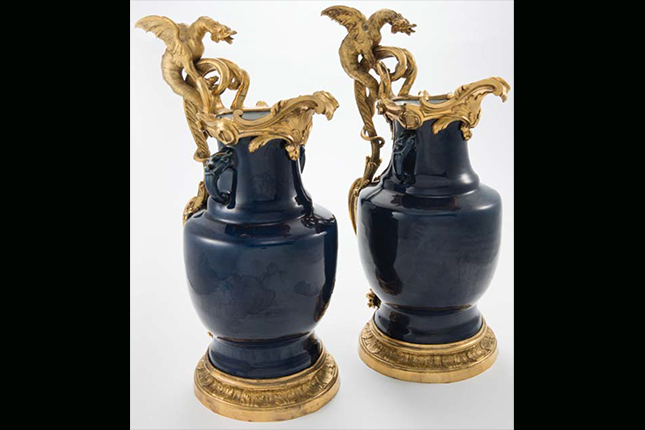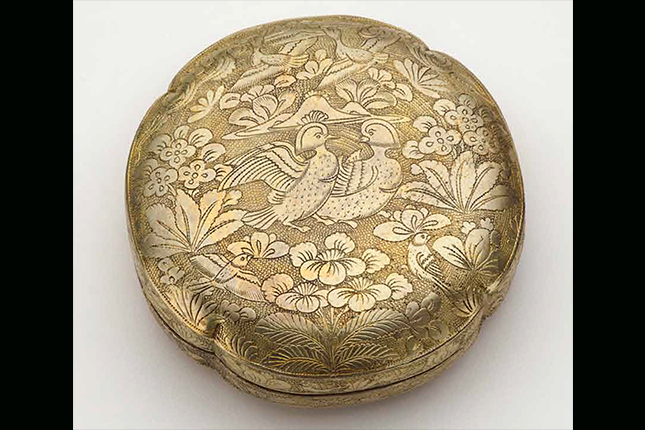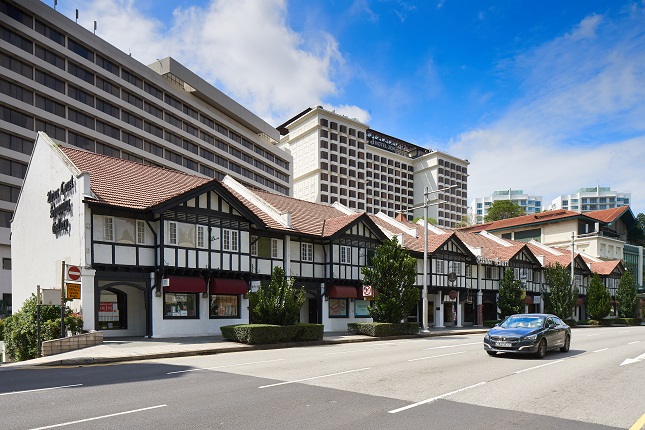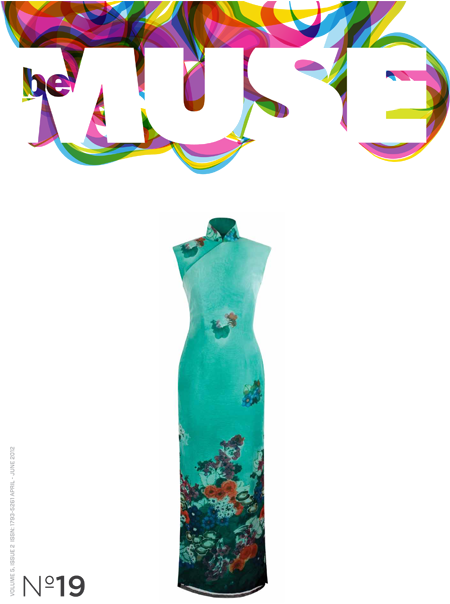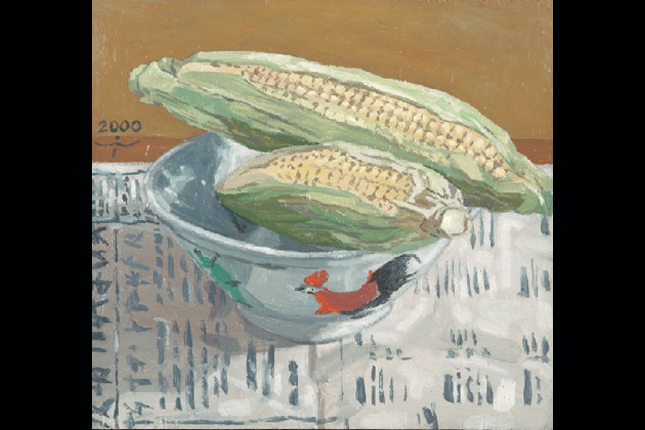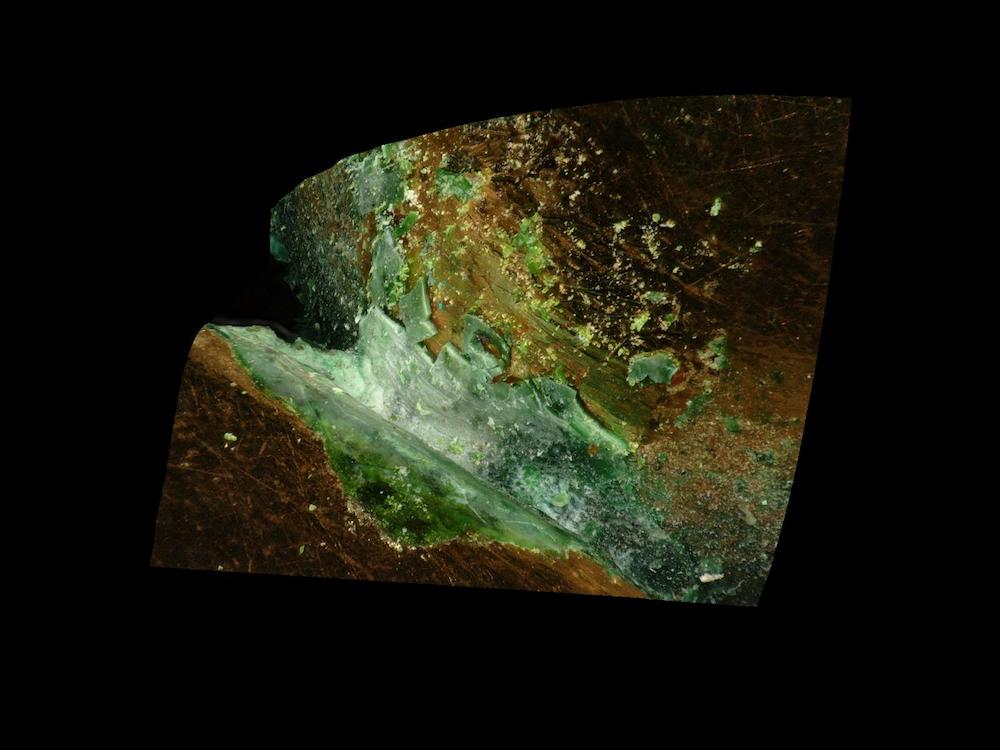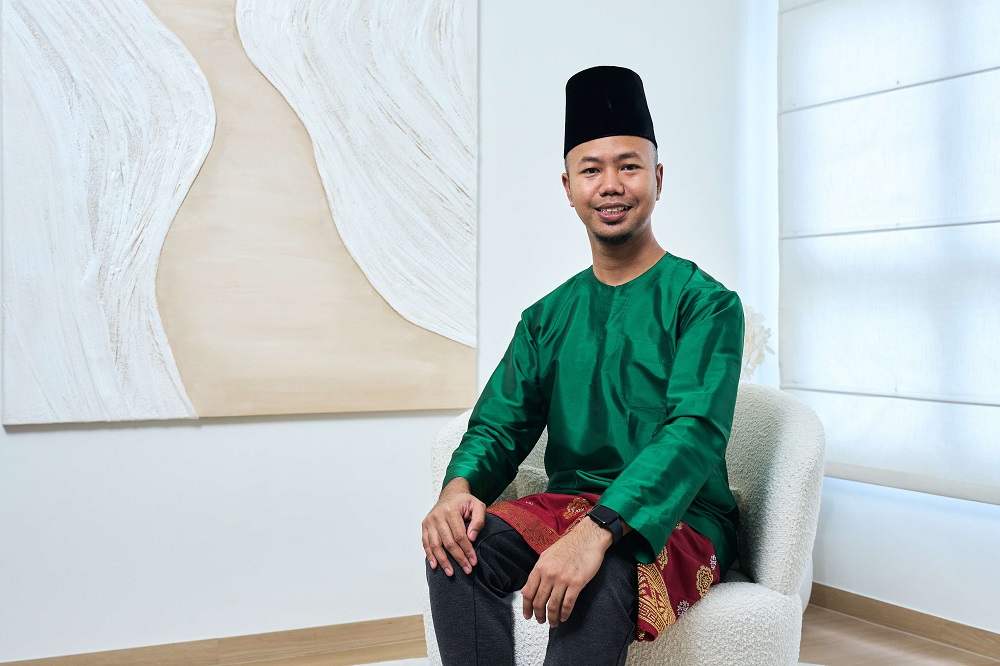This vase was made in the form of the archaic gu-shaped (hourglass) wine vessel. It has underglaze blue decoration of figures (probably scholars) standing in a mountainous landscape with pine trees. Painted in two parts, the vase is separated by a bulbous waist decorated with a repeated motif of a musical instrument, the qin. Scenes which alluded to the lives of the literati became popular during the Transitional period (1620–1683). During this time, private kilns in Jingdezhen, turned to these themes as production for the court declined, and the literati-gentry and merchants became the main patrons for their wares. These themes were popularised by their depiction on woodblock prints, painting manuals, and various luxury goods. Archaic forms were likely to have interested the literati.




